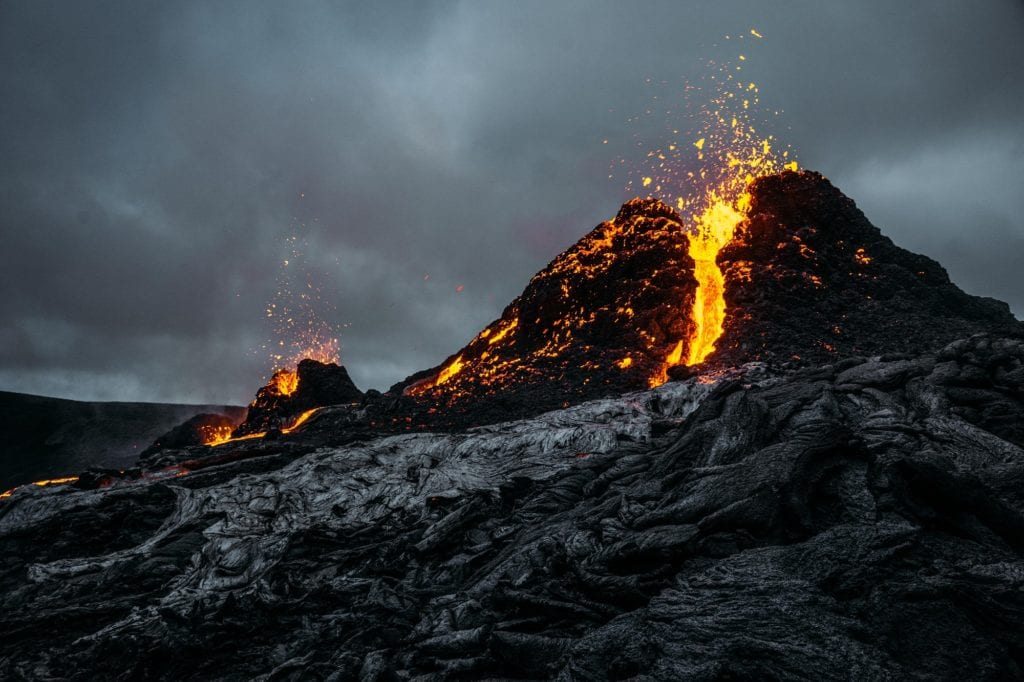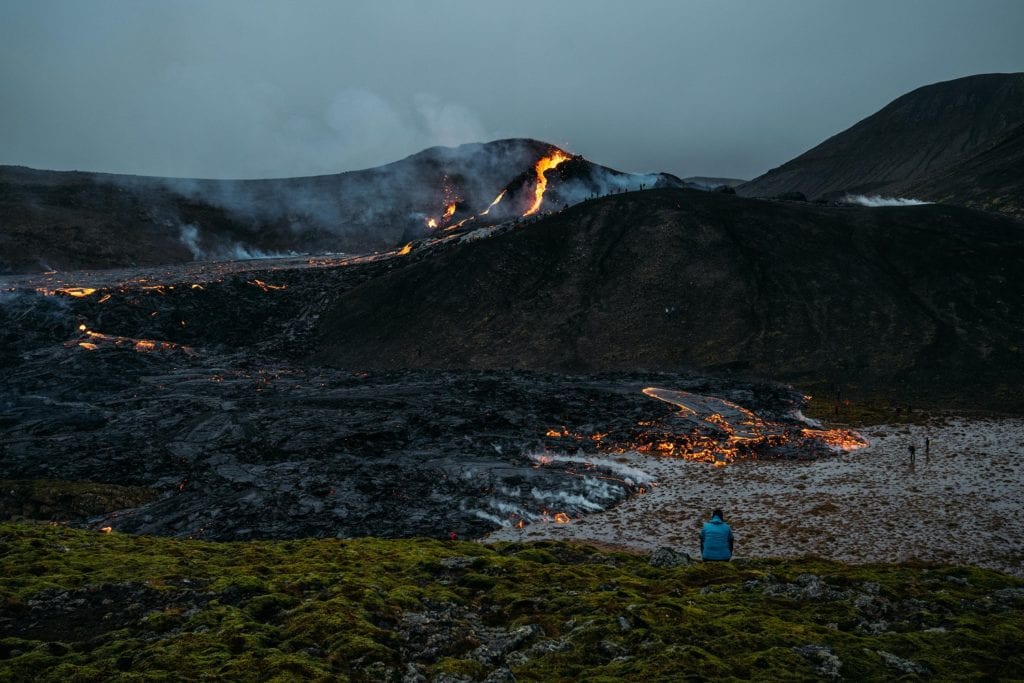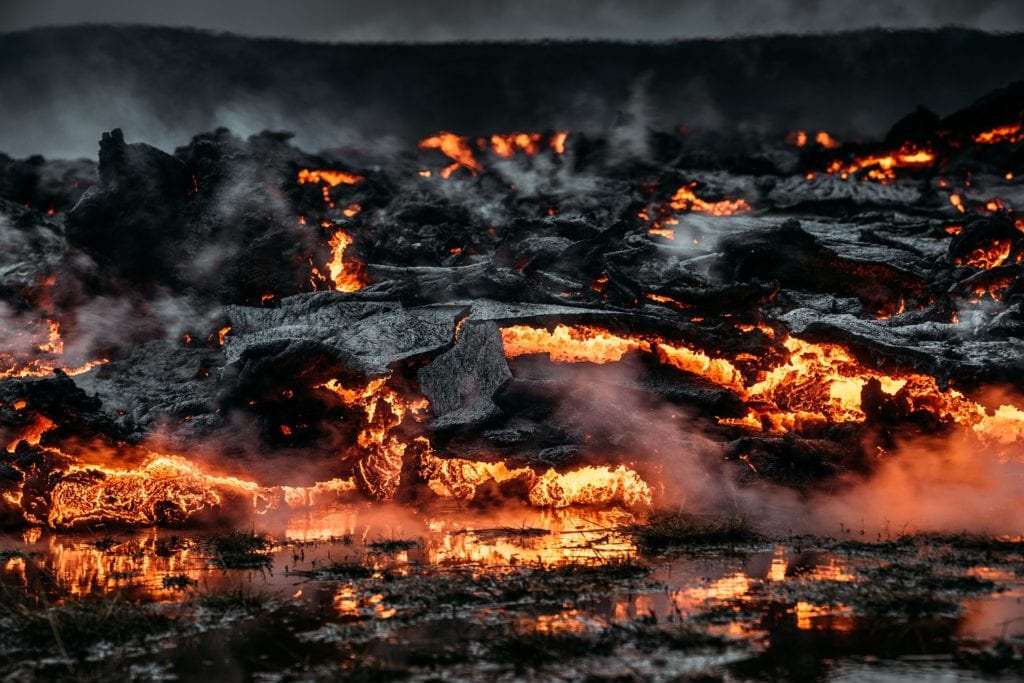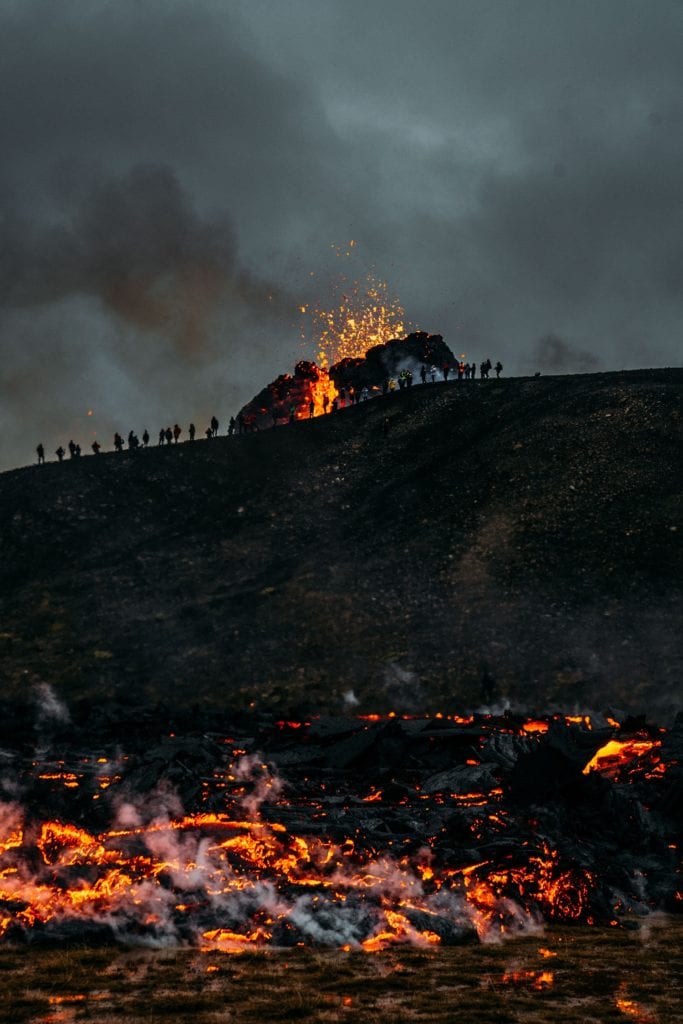At 8.45pm on 19 March, a volcanic eruption took place near Fagradalsfjall mountain on the Reykjanes Peninsula in the southwest Iceland. Around that time, we were getting into our routine pool session but it did not take long until we heard the kids happily screaming about it: ‘Eldgos, eldgos!’ (‘Eruption, eruption!’)
Over the past few weeks, Reykjavík and the Reykjanes Peninsula have experienced numerous tremors, shaken five or six times a day by mini-earthquakes of a magnitude of 3.0 and higher. Then came a tremor of 5.7 and we knew something big would follow.
The eruption immediately made headlines worldwide – not surprising given the havoc caused by Eyjafjallajökull in 2010. But here in Iceland, the authorities were advising us to stay calm since the eruption was not a threat to life. And so it was, on Saturday morning while I was having a cup of coffee and checking the live stream from the main media channel installed near the eruption site, when I saw some people standing just in front of the newborn lava fields. Immediately we checked our phones and social media and realised that the area was partially open to the public.

It did not take too long for us to decide what to do. We grabbed our backpacks, water bottles, GPS and some snacks. It was already late for a long hike, but we did the maths and knew it would possible to reach the site, take a walk around and finish before midnight.
We left our house in Reykjavík and parked in one of the designated areas, although only after a long talk with the Almannavarnir (civil protection patrol), who were checking to make sure prospective hikers were sufficiently prepared. There is no distinct trail to the eruption site at Fagradalsfjall; just rough, vast lava fields covered by a dense green layer of moss, and full of hidden holes and lava caves. Only those with plenty of hiking experience and the right gear could tackle such a climb, particularly given the terrible weather that day. (As we run a tour operator offering trips to some of the remotest places on the island, we met the credentials.)
Unlike some people, we started our hike near the Blue Lagoon instead of Grindavík village. After about 2½ hours, we reached the top of an old mountain ridge covered in moss, from where we could hear the sound of helicopter propellers in the distance. We scanned the scene below us, trying to find any sign of the eruption site, until we noticed a small red glow reflecting in the clouds. In the ridge of the valley, just 300m away, the Earth itself was exhaling its warm breath.

Entranced by that impressive view, it took me a few minutes to realise I needed to take the camera out of my backpack and start shooting. We weren’t alone on the ridge; there were a few people near the lava, and others close to the crater. The Almannavarnir teams were around too, dressed in their protective equipment to ensure the safety of those on the site.
The melted lava crackled as it touched the damp mossy valley. As we inched closer, we could feel the scorching heat burning our hands and faces – the lava temperature was around 1,200°C, and the smell was so powerful and thick it almost knocked us out. We were used to smelling the sulphur-rich water from hot springs all across the island, but this was completely different.
As we looked up, the immense craters were spitting lava constantly – in that moment, you really could feel the energy flowing from the depths of the Earth. Everyone was quiet, stood frozen in the lava, like we had all been hypnotised. Everyone proceeded around the area safely and were very careful not to take any risks – nature is not a joke, especially in Iceland.
The walls of the main crater started to collapse, breaking down and letting the lava flow freely in new directions. We realised night was falling over us, so we packed up our stuff and hiked back up the mountain. At the top we took one last look back down – night had engulfed us by this point, but the Gates of Hell beneath continued to burn an intense red tone. We turned on our headlamps and started the long way back to our vehicle through the lava fields, still without truly realising the experience we had just lived.
Amarok Adventures are a local operator specialising in trips exploring Iceland’s remotest corners.

